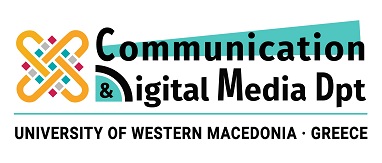CDM 3274 INTERNET TECHNOLOGIES AND DESIGN IN THE WORLD WIDE WEB II
LEVEL OF STUDY: UNDERGRADUATE
COURSE UNIT CODE: CDM 3274
SEMESTER: 3rd
COURSE TITLE: INTERNET TECHNOLOGIES AND DESIGN IN THE WORLD WIDE WEB II
TEACHING WEEKLY HOURS: 2 H/W LECTURES and 2 H/W LAB EXERCISES
ECTS: 4
COURSE TYPE: CORE ELECTIVE
TEACHING AND EXAM LANGUAGE: GREEK
COURSE DELIVERY TO ERASMUS STUDENTS: YES (in English through project work)
This course is a continuation of the course Internet Technologies and Design on the World Wide Web. The course will focus on modern technologies involved in the development of websites such as web development platforms (Google Sites, Wix, Weebly, WordPress.com), with particular emphasis on most popular content management systems (WordPress.org, Joomla, Drupal).
The course will also look at popular platforms for creating blogs (eg bloggers) and creating Wikis and online Forums.
The course will also focus on creating online stores and integrating into websites multimedia content found on online video & image sharing platforms (e.g., YouTube, Flickr, Google Drive).
Upon successful completion of the course the student will be able to:
- Compare and evaluate the various web development tools covered in this course (web & blog and Wikis development platforms, content management systems and HTML & PHP Templates. The student will also be able to evaluate the above solutions in relation to methods and the development tools covered in the course "Internet Technologies and Web Design I".
- Compare and evaluate Open Source Content Management Systems (Wordpess, Joomla, Drupal).
- Design and create websites using the most popular online web design and development platforms (eg Google sites, Wix, Weebly, WordPress.com).
- Design and create websites using Open Source Content Management Systems (eg WordPress, Joomla, Drupal).
- Design and develop blogs for personal and professional use (eg via Blogger).
- Design and develop Wikis for collaborative web content production
- Create online stores with the capabilities provided by online web development platforms and content management systems.
- Follow the rules of SEO to create search engine friendly pages. Additional actions for better ranking in search engines (eg attracting incoming links etc)
- To integrate multimedia content found on other online platforms and social networks on websites. Examples of such content may be Videos from video sharing platforms (YouTube, Vimeo), photos and PhotoAlbum from photo sharing platforms and social networks (e.g. Flickr, Instagram, Google Drive), presentations, graphs, questionnaires (Google Forms).
- To combine the knowledge acquired in the previous semester on image and video editing packages for the design of elegant and effective online presences.
- Adapt to developments in web design and development platforms and content management systems and redesign online presence based on these developments.
